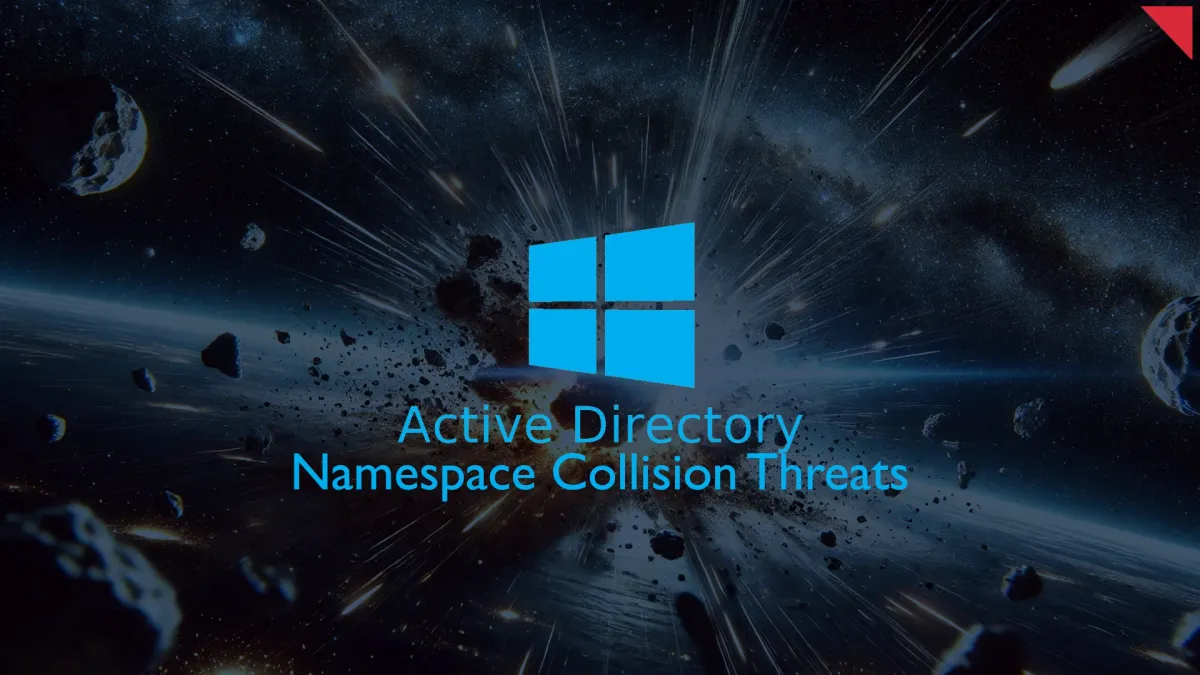Namespace Collision Exploits in Microsoft Active Directory Networks: A Growing Threat
On August 23, 2024, cybersecurity researcher Philippe Caturegli released a comprehensive report detailing the persistent and growing issue of namespace collisions in Microsoft Active Directory (AD) networks.

Introduction
On August 23, 2024, cybersecurity researcher KrebsOnSecurity released a comprehensive report on recent research of Philippe Caturegli on the persistent and growing issue of namespace collisions in Microsoft Active Directory (AD) networks. The report highlights how these collisions, exacerbated by the proliferation of new top-level domains (TLDs), can expose organizations to significant security risks. Caturegli's findings highlight the importance of addressing this long-standing vulnerability to prevent unauthorized access to sensitive corporate networks.
Report Overview
Namespace collision occurs when internal domain names intended for exclusive use within a corporate network overlap with domains that can be resolved on the open Internet. This issue has become more prevalent as new TLDs like .llc, .network, and .cloud have emerged. Many organizations, having set up their AD environments long before these TLDs existed, unknowingly expose their Windows credentials to the public Internet. Caturegli, the founder of the security consultancy Seralys, has taken a leading role in mapping this vulnerability and its implications.
Caturegli's research involved scanning the open Internet for self-signed SSL/TLS certificates that reference domains likely to be used in AD setups. His analysis identified over 9,000 domains across various TLDs, including .ad, .cloud, and .group. Shockingly, many of these domains were still unregistered, making them easy targets for cybercriminals. Caturegli's efforts also revealed that some organizations, including government entities and critical infrastructure, used misconfigured AD setups with publicly routable domains.
One particularly concerning example involved the domain memrtcc.ad, which was actively being used by the Memphis Police Department's Real-Time Crime Center. Caturegli was able to register this domain, intercepting a flood of Windows authentication requests from police systems, each containing usernames and hashed passwords. This incident highlighted the ease with which attackers could exploit namespace collisions to gain unauthorized access to sensitive systems.
The consequences of namespace collisions can be severe, potentially allowing attackers to intercept credentials, redirect traffic, and compromise entire networks. In the case of the Memphis Police Department, Caturegli's actions prompted immediate efforts to transfer the domain and mitigate the threat. However, the broader implications of his findings suggest that many organizations worldwide remain vulnerable to similar attacks. As Caturegli noted, the scale of the issue is larger than initially anticipated, with potential impacts extending to critical infrastructure and government entities.
Insights and Analysis
Caturegli's research emphasizes the need for organizations to re-evaluate their AD setups and ensure they are using non-routable domains, such as .local, for internal networks. Mike Barlow, the Information Security Manager for the City of Memphis, acknowledged the severity of the issue and confirmed that efforts were underway to mitigate the risk. Meanwhile, domain industry veteran Mike O'Connor, who has long warned about the dangers of namespace collisions, highlighted the need for greater awareness and proactive measures to address this threat.
Organizations should prioritize auditing their AD environments to identify any potential namespace collisions. Implementing best practices, such as using .local for internal domains, can significantly reduce the risk of unauthorized access. Additionally, regular monitoring and updating of network configurations are essential to stay ahead of emerging threats.
The ongoing issue of namespace collisions in Microsoft Active Directory networks presents a significant security risk that must not be ignored.
Indicators of Compromise (IOCs)
No additional specific Indicators of Compromise (IOCs) were provided in the source material.
MITRE ATT&CK Mapping
| Tactic | Technique | ID | Description |
|---|---|---|---|
| Credential Access | Forced Authentication | T1187 | Exploiting Windows systems' attempts to authenticate with malicious or misconfigured domains, such as through WPAD or Active Directory namespace collisions. |
References





Comments ()